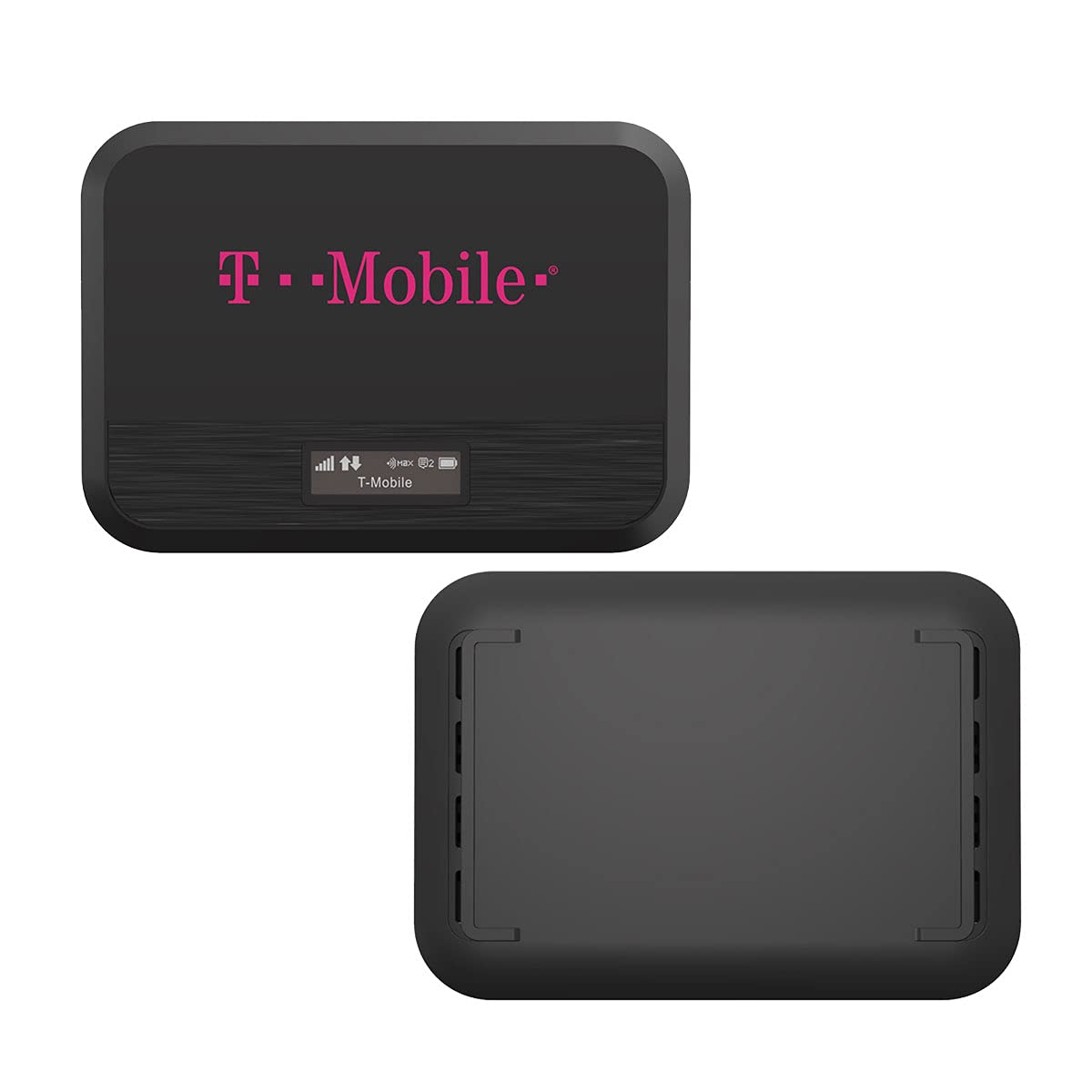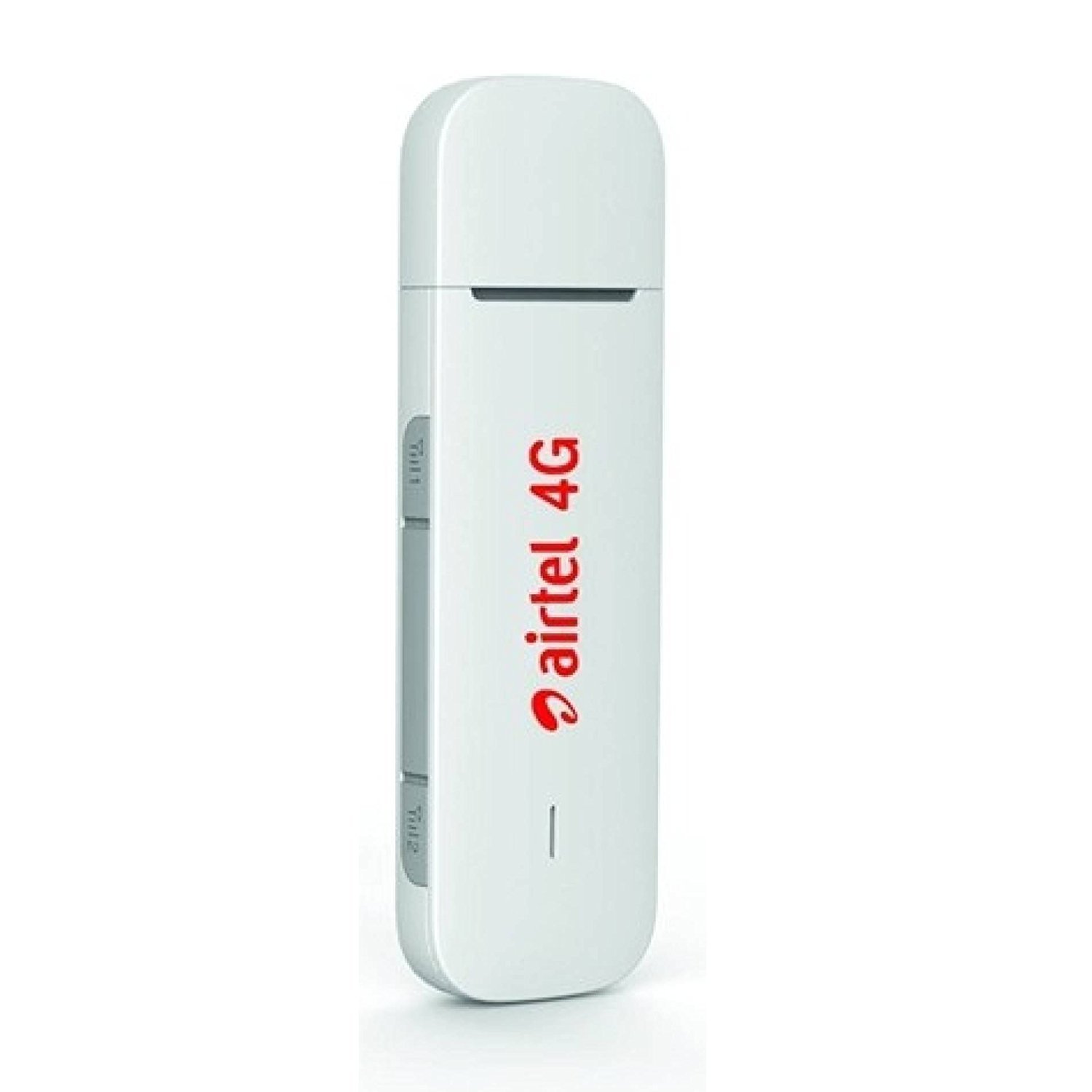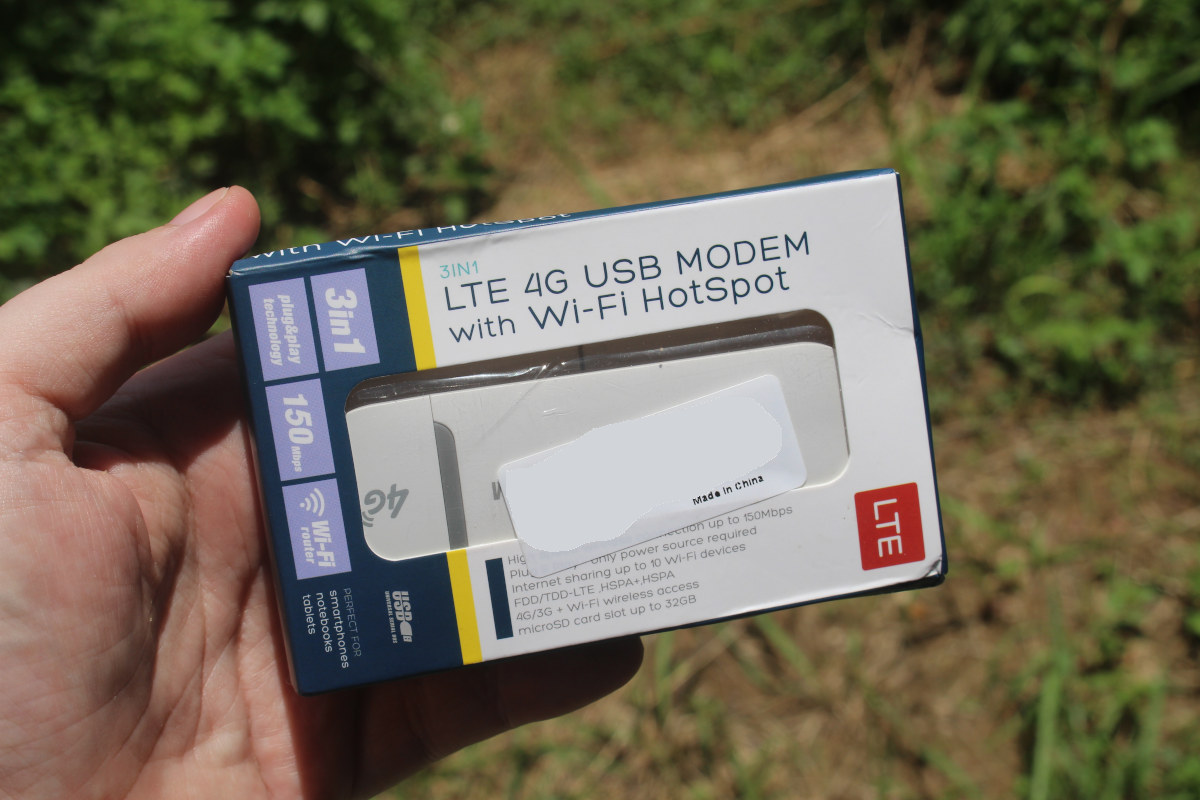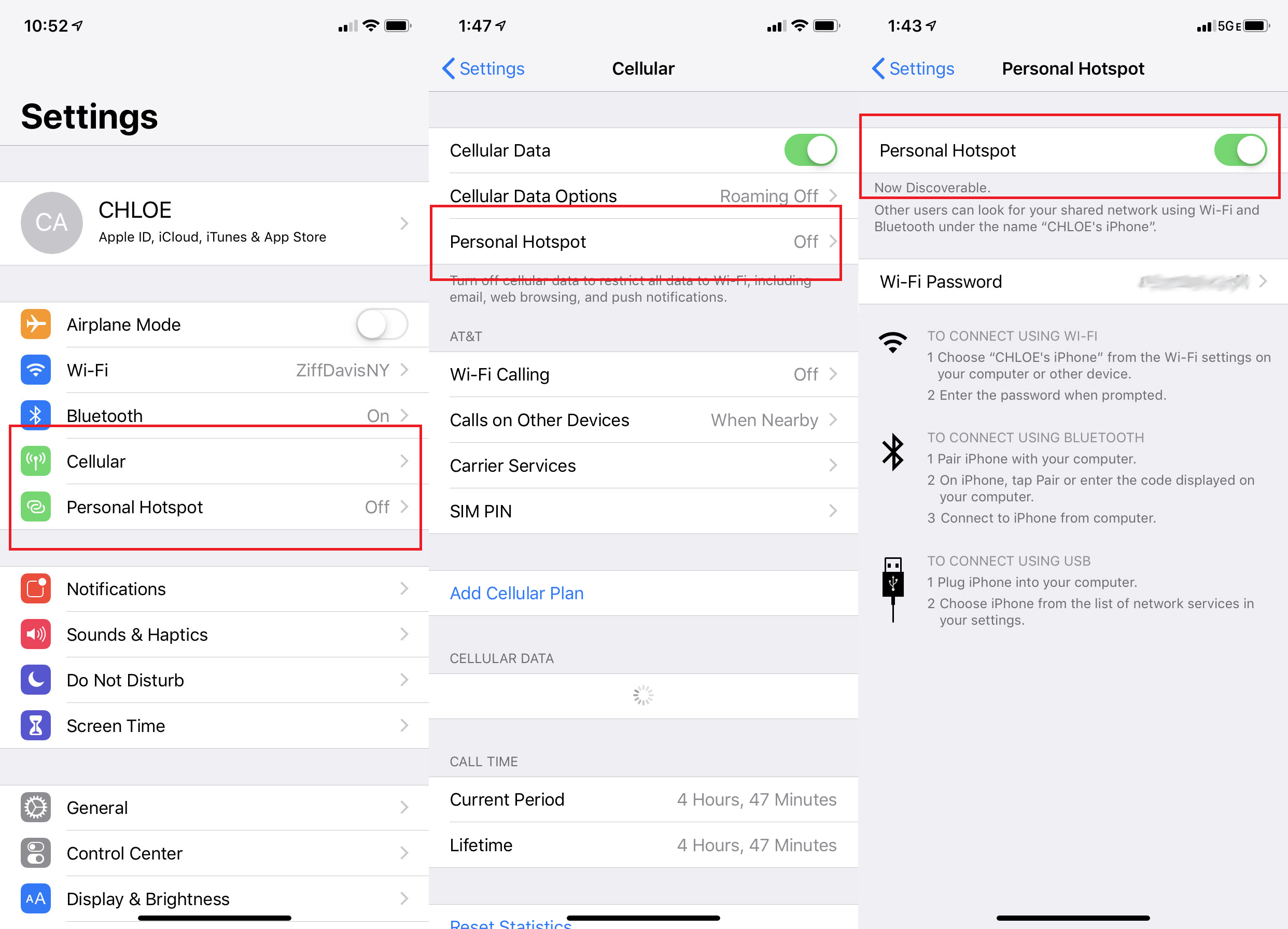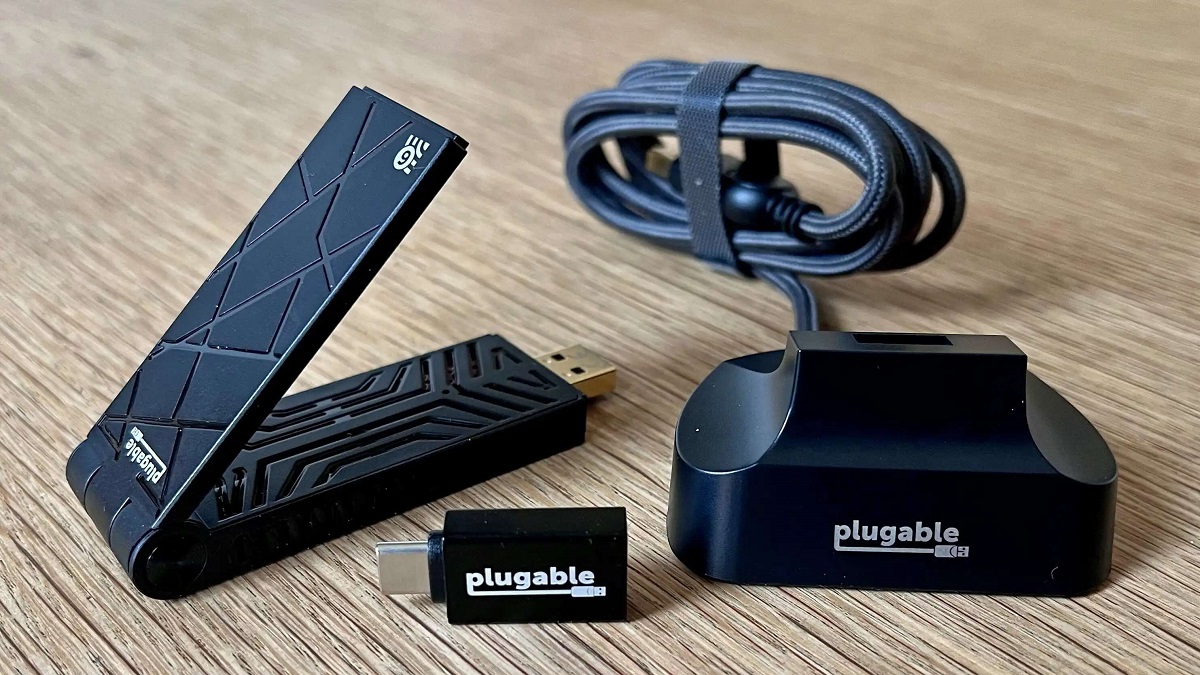Introduction
A Wi-Fi hotspot has become an essential part of our modern life, allowing us to connect to the internet wirelessly in various public places. Whether it’s a coffee shop, airport, hotel, or even a park, the availability of Wi-Fi hotspots has revolutionized the way we stay connected on the go. In this article, we will explore what exactly a Wi-Fi hotspot is and how it works.
A Wi-Fi hotspot refers to a location where wireless internet access is made available to users, typically through a wireless local area network (WLAN). It provides a convenient way for individuals to connect their devices, such as smartphones, tablets, or laptops, to the internet without the need for physical cables.
So how does a Wi-Fi hotspot work? In simple terms, a Wi-Fi hotspot consists of two main components: the hardware that facilitates the wireless connection and the internet connection that is being shared.
The hardware component of a Wi-Fi hotspot involves a wireless router, which is responsible for transmitting and receiving data between devices and the internet. The router connects to the internet using a wired connection, such as an Ethernet cable or a fiber optic line.
When a user wants to connect to the Wi-Fi hotspot, they will search for available networks on their device and select the one provided by the hotspot. The device communicates with the wireless router using a protocol called Wi-Fi, which enables data transmission over short distances.
Once the device is connected to the Wi-Fi hotspot, it can send and receive data through the wireless router, which acts as an intermediary between the device and the internet. The router forwards the data between the device and the internet using the established internet connection.
Security is a crucial aspect of Wi-Fi hotspots, as they are often used in public settings where multiple users access the same network. The Wi-Fi hotspot typically has a password or an access code that users need to enter to authenticate themselves and gain access to the network. This helps protect the network from unauthorized access and ensures that only authorized users can connect.
Wi-Fi hotspots offer numerous advantages, such as convenience, flexibility, and cost-effectiveness. They allow users to stay connected to the internet while on the move, enabling them to work, communicate, or browse the web without relying on cellular data. Moreover, Wi-Fi hotspots can often be accessed for free or for a nominal fee, making them an attractive option for many.
However, Wi-Fi hotspots also have limitations and potential risks associated with them. Users need to be cautious when connecting to public Wi-Fi networks, as they may be vulnerable to security threats, such as data breaches or unauthorized access to personal information. It’s essential to take precautions and follow best practices to ensure a safe and secure browsing experience.
In this article, we will delve deeper into the hardware behind a Wi-Fi hotspot, the connection process, security measures, as well as the advantages and disadvantages of using Wi-Fi hotspots. We will also provide some useful tips to help you use Wi-Fi hotspots safely and protect your personal information.
What is a Wi-Fi hotspot?
A Wi-Fi hotspot is a location where wireless internet access is provided to users through a wireless local area network (WLAN). It allows individuals to connect their devices, such as smartphones, tablets, or laptops, to the internet without the need for physical cables.
Hotspots are commonly found in public places like cafes, airports, hotels, libraries, and shopping centers, as well as in private spaces like homes and offices. They enable people to stay connected while on the move, providing them with the freedom and convenience to access the internet from virtually anywhere.
Wi-Fi hotspots are typically created using a wireless router. This device acts as a central hub that transmits and receives data between connected devices and the internet. It establishes a local network within its coverage area, allowing multiple devices to connect and share the internet connection.
Hotspots can be open or closed, depending on the access restrictions set by the network provider. Open hotspots do not require any authentication or password to connect, whereas closed hotspots require users to enter a password or an access code to gain access.
In addition to public hotspots provided by businesses and organizations, personal hotspots can be created using smartphones or mobile devices. These devices allow users to share their cellular data connection with other devices, effectively turning them into portable Wi-Fi hotspots.
Hotspots can operate on different frequencies, most commonly 2.4 GHz and 5 GHz. The 2.4 GHz frequency provides a wider coverage area but may be subject to interference from other devices, such as cordless phones or microwaves. The 5 GHz frequency offers faster speeds and less congestion but has a shorter range.
Wi-Fi hotspots have become an integral part of our daily lives, enabling us to stay connected and productive no matter where we are. They have transformed the way we work, communicate, and access information, providing us with instant connectivity in an increasingly digital world.
However, it is important to be cautious when connecting to public Wi-Fi hotspots, as they can pose certain risks. Without proper security measures, data transmitted over a public hotspot may be vulnerable to interception or unauthorized access. Therefore, it is advisable to use secure connections, such as a Virtual Private Network (VPN), when accessing sensitive information over a public Wi-Fi network.
In the following sections, we will explore the inner workings of a Wi-Fi hotspot, including the hardware involved, the connection process, security measures, as well as the advantages and disadvantages of using Wi-Fi hotspots.
How does a Wi-Fi hotspot work?
Wi-Fi hotspots are a result of the seamless integration of hardware and software components that work together to provide wireless internet access. Understanding how they function can help us appreciate the convenience and versatility they offer.
The fundamental operation of a Wi-Fi hotspot involves two main components: the hardware that facilitates the wireless connection and the internet connection that is being shared.
At the core of a Wi-Fi hotspot is a wireless router. This device acts as a central hub that enables communication between connected devices and the internet. The router is connected to the internet through a wired connection, such as an Ethernet cable or a fiber optic line.
When a user wants to connect to a Wi-Fi hotspot, they search for available networks on their device. The device then communicates with the wireless router using Wi-Fi technology, establishing a connection between the device and the router.
Once the device is connected to the Wi-Fi hotspot, it can send and receive data through the router, which acts as an intermediary between the device and the internet. The router receives data from the connected device, such as requests to access websites or download files, and forwards those requests to the internet.
When the internet responds with the requested information, the router receives the data and transmits it back to the device, completing the data transfer cycle. This seamless process allows users to access the internet wirelessly and browse websites, stream media, or use online services.
In order to establish this connection, the Wi-Fi hotspot may employ security measures to protect the network from unauthorized access. It typically requires users to enter a password or an access code to authenticate themselves before they can connect to the network.
Moreover, the router may have advanced features, such as bandwidth management, that ensure all connected devices receive an optimal internet speed. This helps maintain a stable and reliable connection even when multiple devices are connected simultaneously.
It’s worth noting that Wi-Fi hotspots can have different ranges depending on the strength of their antennas. Some hotspots cover a small area, known as local hotspots, while others, such as those in public spaces, have a larger coverage area to accommodate more users within their vicinity.
Overall, Wi-Fi hotspots have become a ubiquitous presence in our daily lives, keeping us connected and enabling us to access the internet with ease. Whether we are checking emails in a coffee shop, collaborating on work documents at an airport, or simply enjoying online entertainment in a public park, Wi-Fi hotspots have revolutionized how we stay connected on the go.
In the following sections, we will explore the hardware behind Wi-Fi hotspots, the connection process, security measures, as well as the advantages and disadvantages of using them. By understanding these aspects, users can make the most of Wi-Fi hotspots while taking appropriate precautions to ensure a safe and enjoyable experience.
The hardware behind a Wi-Fi hotspot
A Wi-Fi hotspot relies on specific hardware components to facilitate wireless internet access and create a network that allows multiple devices to connect. Understanding the hardware behind a Wi-Fi hotspot can provide insight into its functionality and performance.
The central piece of hardware in a Wi-Fi hotspot is the wireless router. This device serves as the heart of the hotspot by transmitting and receiving data between connected devices and the internet. The router acts as the bridge that facilitates communication and data transfer.
Inside the wireless router, there are several key components that enable its operation. One vital component is the network processor, which handles the routing of data packets between devices and the internet. The network processor is responsible for managing the flow of data and ensuring that it reaches its intended destination.
Another crucial hardware component is the wireless radio interface. This interface allows the router to send and receive data using Wi-Fi technology, which operates on specific frequency bands, such as 2.4 GHz or 5 GHz. The wireless radio interface ensures that devices within the hotspot’s range can establish a wireless connection and access the internet.
The wireless router also contains built-in antennas that transmit and receive the Wi-Fi signals. These antennas help extend the coverage area of the hotspot and improve the signal strength for connected devices. The number and positioning of antennas may vary depending on the router model and its intended range.
In addition, the router may have Ethernet ports that allow for wired connections. These ports enable devices to connect directly to the router using an Ethernet cable. Wired connections can be useful in situations where a more stable and reliable internet connection is required.
Powering the Wi-Fi hotspot hardware is an electrical power supply. This can be an adapter that plugs into a wall outlet or in some cases, the router may be powered through Power over Ethernet (PoE), which utilizes the Ethernet cable to provide power and data connectivity simultaneously.
Some Wi-Fi hotspots may also have additional features to enhance their functionality. For example, advanced routers may have USB ports for connecting external storage devices or printers, allowing users to share files or print wirelessly within the network. Some routers may also support features like Quality of Service (QoS), which prioritizes specific types of network traffic for better performance.
It’s important to note that the hardware specifications and capabilities of Wi-Fi hotspots can vary depending on the specific model and manufacturer. Higher-end routers may have more advanced features and offer better performance, such as faster data transfer speeds or improved coverage.
Understanding the hardware behind a Wi-Fi hotspot gives us insight into the technology that enables wireless internet access. By considering factors like the router model, antenna configuration, and additional features, we can make informed decisions when choosing Wi-Fi hotspots and ensure that they meet our specific needs.
In the next sections, we will explore the connection process to a Wi-Fi hotspot, the security measures in place, as well as the advantages and disadvantages of using Wi-Fi hotspots. By gaining a deeper understanding of these aspects, users can make the most of Wi-Fi hotspots while ensuring their privacy and security.
Connection process to a Wi-Fi hotspot
Connecting to a Wi-Fi hotspot is a relatively simple process that allows users to access the internet wirelessly. Understanding the connection process can help users easily connect their devices to Wi-Fi hotspots and enjoy internet connectivity on the go.
The connection process begins with the user’s device, such as a smartphone, tablet, or laptop, searching for available Wi-Fi networks. This is usually done by accessing the device’s Wi-Fi settings or using the Wi-Fi icon in the device’s status bar.
Once the device scans for nearby Wi-Fi networks, it displays a list of available hotspots. The user then chooses the desired Wi-Fi network from the list, typically based on the network name (SSID) provided by the hotspot.
Most Wi-Fi hotspots are secured, requiring users to enter a password or an access code to connect. When prompted, the user enters the correct password or access code to authenticate themselves and gain access to the network. This authentication ensures that only authorized users can connect to the hotspot.
After the device successfully authenticates with the Wi-Fi hotspot, it sends a connection request to the hotspot’s wireless router. The router receives the request and establishes a connection with the device, assigning it a unique IP address that allows it to communicate within the network.
Once the connection is established, the device and the router can exchange data. The device can send requests for web pages, download files, stream videos, or perform any other internet-related tasks. The router acts as an intermediary, forwarding the data between the device and the internet.
In situations where multiple devices are connected to the same Wi-Fi hotspot, each device is assigned a unique IP address, ensuring that data is directed to the appropriate device. The router manages the traffic flow, ensuring that all connected devices receive fair access to the internet.
It’s important to note that some Wi-Fi hotspots have limitations on the number of simultaneous connections allowed. This limitation is in place to ensure the best possible user experience for all users connected to the hotspot. When the maximum number of connections is reached, additional devices may not be able to connect until a connected device disconnects from the network.
If the Wi-Fi hotspot has a captive portal, the user may be redirected to a login page after connecting to the network. This login page may require the user to agree to terms and conditions or provide additional information before gaining full access to the internet. Once the user completes any necessary steps on the captive portal, they can navigate the web freely.
Overall, the connection process to a Wi-Fi hotspot involves selecting the network, authenticating with a password or access code, establishing a connection with the wireless router, and then being able to browse the internet. This seamless process allows users to access the internet wirelessly and enjoy the benefits of connectivity while on the move.
In the next sections, we will explore the security measures in place for Wi-Fi hotspots, as well as the advantages and disadvantages of using them. By understanding these aspects, users can ensure a safe and enjoyable browsing experience when connecting to Wi-Fi hotspots.
Security measures for Wi-Fi hotspots
While Wi-Fi hotspots provide convenient and accessible internet connectivity, it’s important to be aware of the security risks that can arise when connecting to public or unsecured networks. Implementing proper security measures is crucial to protect personal information and ensure a safe browsing experience on Wi-Fi hotspots.
One of the primary security measures for Wi-Fi hotspots is the use of encryption protocols, such as WPA2 (Wi-Fi Protected Access 2). Encryption scrambles the data transmitted between the user’s device and the wireless router, making it difficult for unauthorized users to intercept and access the information.
When connecting to a Wi-Fi hotspot, it is recommended to choose networks that have WPA2 encryption enabled. This ensures that the data exchanged between the device and the router remains secure. Networks using outdated or weak encryption methods should be avoided as they may be more susceptible to security breaches.
In addition to encryption, Wi-Fi hotspots often utilize a password or access code to restrict access to authorized users. This is known as a pre-shared key (PSK) or network key. Users who want to connect to the hotspot are required to enter the correct password or access code to authenticate themselves and gain access to the network.
It is essential to use strong and unique passwords for Wi-Fi hotspots. A strong password should consist of a combination of uppercase and lowercase letters, numbers, and special characters. Avoid using easily guessable passwords like “password” or “123456” as these can be easily cracked by attackers.
Furthermore, the Wi-Fi hotspot should regularly change the password to prevent unauthorized individuals from gaining long-term access to the network. This can be done through router settings or network administration settings.
In some cases, Wi-Fi hotspots may implement more advanced security features, such as the use of a captive portal. A captive portal is a web-based interface that requires users to agree to terms and conditions or provide additional information before gaining full access to the internet. This helps ensure that only legitimate users are granted access to the network.
Users should also be cautious when accessing sensitive information, such as online banking or personal email accounts, over public Wi-Fi hotspots. To mitigate the risk of data interception, it is advisable to use a Virtual Private Network (VPN). A VPN creates a secure and encrypted connection between the user’s device and a remote server, protecting the data transmitted over the network from prying eyes.
Another security measure to consider is disabling automatic connectivity to networks. Many devices have a feature that automatically connects to available networks. While this may be convenient, it can also expose users to unsecured networks without their knowledge. By disabling this feature, users have more control over which Wi-Fi networks they connect to.
It’s always wise to exercise caution and practice good security habits when using Wi-Fi hotspots. Avoid accessing sensitive information, such as banking accounts or entering passwords, unless on a trusted and secure network. Additionally, keeping devices up to date with the latest software and security patches helps protect against known vulnerabilities.
By being mindful of security measures and following best practices, users can enjoy the convenience of Wi-Fi hotspots while minimizing the risk of data breaches and unauthorized access. By protecting personal information and maintaining a secure browsing environment, users can confidently take advantage of the benefits of Wi-Fi hotspots.
In the next sections, we will explore the advantages and uses of Wi-Fi hotspots, as well as the disadvantages and limitations associated with them. By understanding these aspects, users can make informed decisions when utilizing Wi-Fi hotspots for their internet connectivity needs.
Advantages and uses of Wi-Fi hotspots
Wi-Fi hotspots have become an integral part of our modern lives, offering numerous advantages and enabling a wide range of uses. From convenience and flexibility to cost-effectiveness, Wi-Fi hotspots have revolutionized how we stay connected and utilize the internet.
One of the major advantages of Wi-Fi hotspots is the convenience they provide. They allow users to access the internet wirelessly, eliminating the need for physical cables and providing a clutter-free browsing experience. Whether in a café, airport, or public park, Wi-Fi hotspots offer instant connectivity, enabling users to work, communicate, or simply browse the web with ease.
Furthermore, Wi-Fi hotspots offer flexibility in terms of device compatibility. Whether you are using a smartphone, tablet, laptop, or any other Wi-Fi enabled device, you can connect to a hotspot and access the internet seamlessly. This flexibility allows users to use their preferred device and stay connected wherever they go.
Wi-Fi hotspots are also cost-effective. Many hotspots offer free or low-cost access, allowing users to browse the internet without consuming their cellular data plans. This can be particularly beneficial for travelers who want to stay connected but want to avoid expensive roaming charges.
The widespread availability of Wi-Fi hotspots opens up a range of uses. They are ideal for professionals who need to work remotely or have impromptu meetings in a café. Students can study and access online resources in libraries or coffee shops. Travelers can research destinations, book accommodation, and stay connected while on the go. Wi-Fi hotspots have also made it easier for individuals to stay in touch with friends and family, access social media, and share their experiences in real-time.
Wi-Fi hotspots are not only beneficial for individuals but also have practical uses for businesses. They enable businesses to offer internet access to customers, enhancing the customer experience and increasing customer satisfaction. For example, restaurants and cafes with Wi-Fi hotspots have become popular among professionals who wish to work while enjoying refreshments.
Additionally, businesses can utilize Wi-Fi hotspots for internal use, allowing employees to connect and collaborate seamlessly. This fosters productivity and flexibility within the workplace, as employees can access company resources, communicate with colleagues, and collaborate on projects from various locations.
Furthermore, public institutions such as libraries, museums, and public transportation facilities can provide Wi-Fi hotspots to promote digital access, education, and connectivity for all visitors. This expands opportunities for learning, encourages engagement, and enhances the overall visitor experience.
Overall, Wi-Fi hotspots have numerous advantages and offer a wide range of uses. Their convenience, flexibility, and cost-effectiveness make them an essential part of our connected world. Whether for work, study, travel, or leisure, Wi-Fi hotspots allow us to stay connected, access information, and fully utilize the resources of the internet.
In the following sections, we will explore the disadvantages and limitations of Wi-Fi hotspots, as well as provide tips for using them safely and securely. By understanding both the benefits and challenges, users can leverage the advantages of Wi-Fi hotspots while being mindful of potential risks.
Disadvantages and limitations of Wi-Fi hotspots
While Wi-Fi hotspots offer countless advantages, there are also several disadvantages and limitations that users should be aware of. Understanding these drawbacks can help individuals make informed decisions about when and how to use Wi-Fi hotspots.
One significant disadvantage of Wi-Fi hotspots is the potential lack of privacy and security. Public Wi-Fi networks, especially those without proper encryption and security measures, can be vulnerable to hackers and data breaches. This puts users’ personal information, such as passwords or credit card details, at risk. It is crucial for users to exercise caution when accessing sensitive information or conducting financial transactions on public Wi-Fi networks.
Another limitation of Wi-Fi hotspots is their reliance on internet service providers (ISPs) and network infrastructure. In areas with weak or congested networks, the internet speed and reliability of the Wi-Fi hotspot could be compromised. The number of users connected to the hotspot at a given time can also impact the overall performance and speed experienced by each user.
Furthermore, some Wi-Fi hotspots may have data usage limitations. Public hotspots, particularly those provided by businesses or establishments, may impose restrictions on the amount of data that can be consumed within a specified time period. Exceeding these limits may result in reduced internet speeds or additional charges.
Accessibility can also be a limitation of Wi-Fi hotspots. While they are prevalent in urban areas and popular public spaces, rural areas or remote locations may have limited or no Wi-Fi hotspot coverage. This can be a challenge for individuals who rely heavily on internet connectivity while traveling or working in such areas.
Additionally, the range of a Wi-Fi hotspot is limited and dependent on the strength of the wireless router’s signal and the surrounding environment. Users need to be within the coverage area of the hotspot to connect and access the internet. Moving too far away from the hotspot can result in a weak or nonexistent signal, causing a loss of connection.
Lastly, some Wi-Fi hotspots may require users to agree to terms and conditions or provide personal information before granting access. While this is a security measure, it can be cumbersome or time-consuming, especially if repetitive login procedures are required for different hotspots.
Despite these disadvantages and limitations, users can mitigate the risks and challenges associated with Wi-Fi hotspots by taking certain precautions. Using a Virtual Private Network (VPN) can help encrypt data and enhance privacy while connected to public Wi-Fi networks. It is also advisable to ensure that devices have up-to-date security software and to avoid accessing sensitive information on public hotspots.
By using Wi-Fi hotspots responsibly and being mindful of the potential drawbacks, users can continue to leverage the benefits of wireless internet connectivity while minimizing potential risks.
In the next section, we will provide tips for using Wi-Fi hotspots safely, ensuring a secure browsing experience even while connected to public networks.
Tips for using Wi-Fi hotspots safely
When connecting to Wi-Fi hotspots, it is important to prioritize your safety and protect your personal information. By following these tips, you can use Wi-Fi hotspots securely and minimize the risks associated with public networks.
1. Use trusted networks: Connect to Wi-Fi hotspots offered by reputable businesses or established institutions. Avoid connecting to unknown or unsecured networks with generic names like “Free Wi-Fi” as they may be set up by potential hackers to collect sensitive information.
2. Choose networks with encryption: Look for Wi-Fi networks that use encryption, such as WPA2, to ensure that your data is encrypted and protected as it travels between your device and the hotspot’s wireless router. Avoid connecting to networks with weaker or outdated encryption methods.
3. Verify captive portals: When connecting to a network with a captive portal, verify the legitimacy of the page that prompts you for additional information. Make sure the URL starts with “https://” and look for familiar branding or logos to ensure it is not a phishing attempt.
4. Enable firewall and antivirus software: Keep your device’s firewall and antivirus software enabled to provide an additional layer of protection against potential threats and malware that may be present on public Wi-Fi networks.
5. Use a VPN: Consider using a Virtual Private Network (VPN) when connecting to public Wi-Fi hotspots. A VPN encrypts your internet traffic, making it difficult for others to intercept and view your data. This helps protect your privacy and ensures secure browsing.
6. Disable automatic network connections: Disable the feature that automatically connects your device to available networks. This prevents your device from connecting to unsecured or unknown networks without your knowledge, reducing the risk of accidentally connecting to malicious networks.
7. Use secure websites: When accessing sensitive information, such as online banking or entering personal credentials, ensure that the website has a secure connection indicated by a padlock icon and “https://” in the URL. This encrypts the data exchanged between your device and the website, protecting it from potential eavesdropping.
8. Be cautious with personal information: Avoid entering sensitive personal information, such as social security numbers or credit card details, when connected to public Wi-Fi networks. Choose secure methods like cellular data or use a trusted VPN when accessing confidential information.
9. Keep devices updated: Regularly update your device’s software, operating system, and apps to ensure that you have the latest security patches and features. This helps protect against known vulnerabilities that could be exploited by attackers.
10. Trust your instincts: If something feels suspicious or if you receive unexpected pop-ups or requests for information, disconnect from the Wi-Fi hotspot immediately. It’s better to err on the side of caution and find a more secure network.
By following these tips, you can use Wi-Fi hotspots safely and minimize the risk of falling victim to potential security threats or privacy breaches. Stay vigilant and prioritize your safety when accessing the internet on public networks.
In the next section, we will summarize the key points discussed in this article about Wi-Fi hotspots and their functionality.
Conclusion
Wi-Fi hotspots have revolutionized the way we stay connected to the internet, offering convenient and accessible wireless internet access in various public locations. By understanding what they are and how they work, as well as the advantages, disadvantages, and safety measures associated with them, users can make informed decisions when connecting to Wi-Fi hotspots.
Wi-Fi hotspots provide us with the convenience of wireless internet connectivity, allowing us to work, communicate, and access information on the go. They offer flexibility for device compatibility, cost-effectiveness, and a wide range of uses in different professional, educational, and recreational settings.
However, it is essential to be aware of the potential security risks and privacy concerns associated with using Wi-Fi hotspots, particularly in public or unsecured networks. Implementing security measures such as encryption, strong passwords, and the use of VPNs can help protect personal information and ensure a safe browsing experience.
By being cautious, using trusted networks, and following best practices, users can mitigate the risks and fully utilize the benefits of Wi-Fi hotspots. It is important to be aware of potential limitations, such as limited coverage areas, potential network congestion, and data usage restrictions.
Wi-Fi hotspots have become an integral part of our interconnected world, enabling us to stay connected, productive, and informed. However, it is up to us as users to take responsibility for our online safety and make educated decisions when connecting to Wi-Fi hotspots.
In conclusion, Wi-Fi hotspots have transformed the way we access the internet, offering convenience, flexibility, and cost-effective connectivity. By understanding the inner workings of Wi-Fi hotspots, the security measures in place, and the best practices for safe usage, we can confidently stay connected and make the most of these wireless networks.










